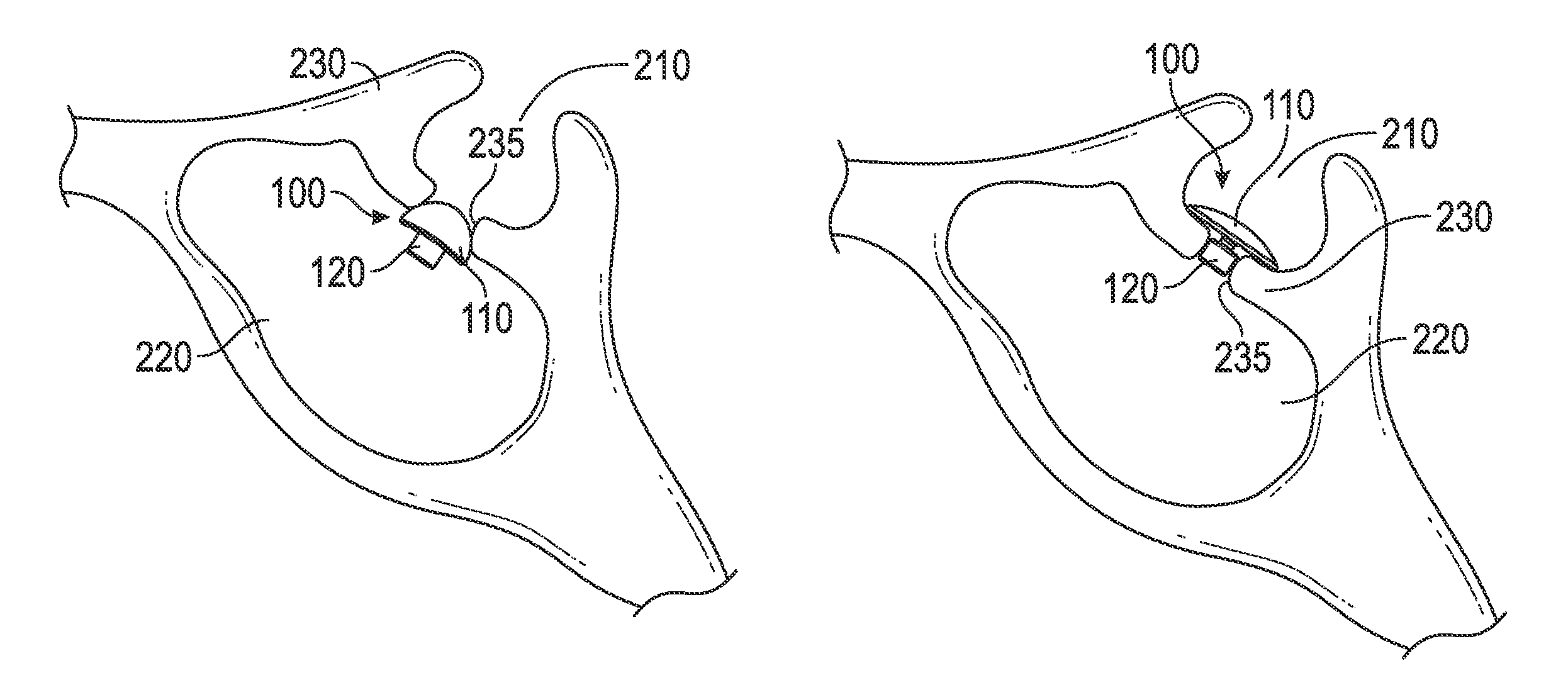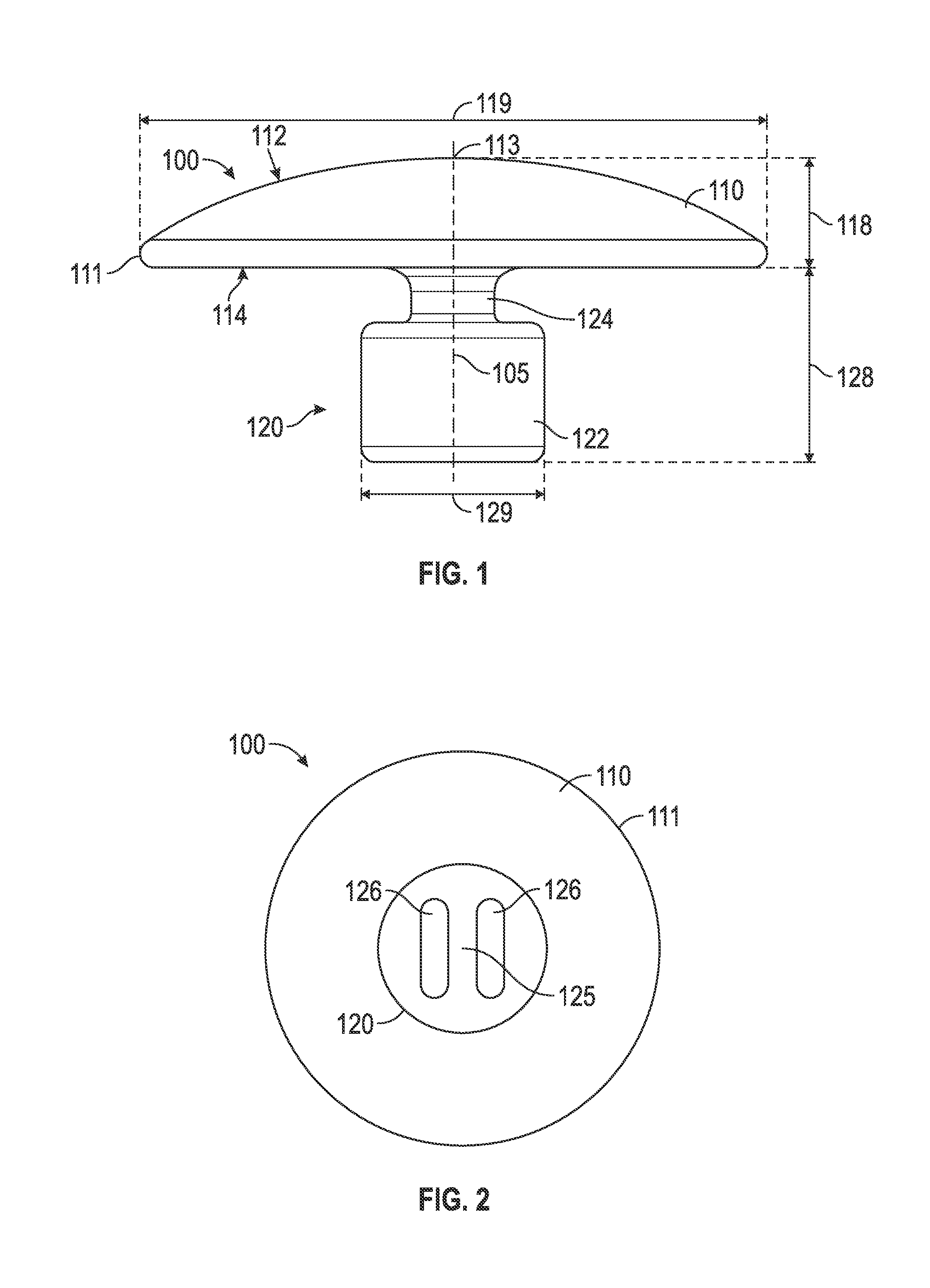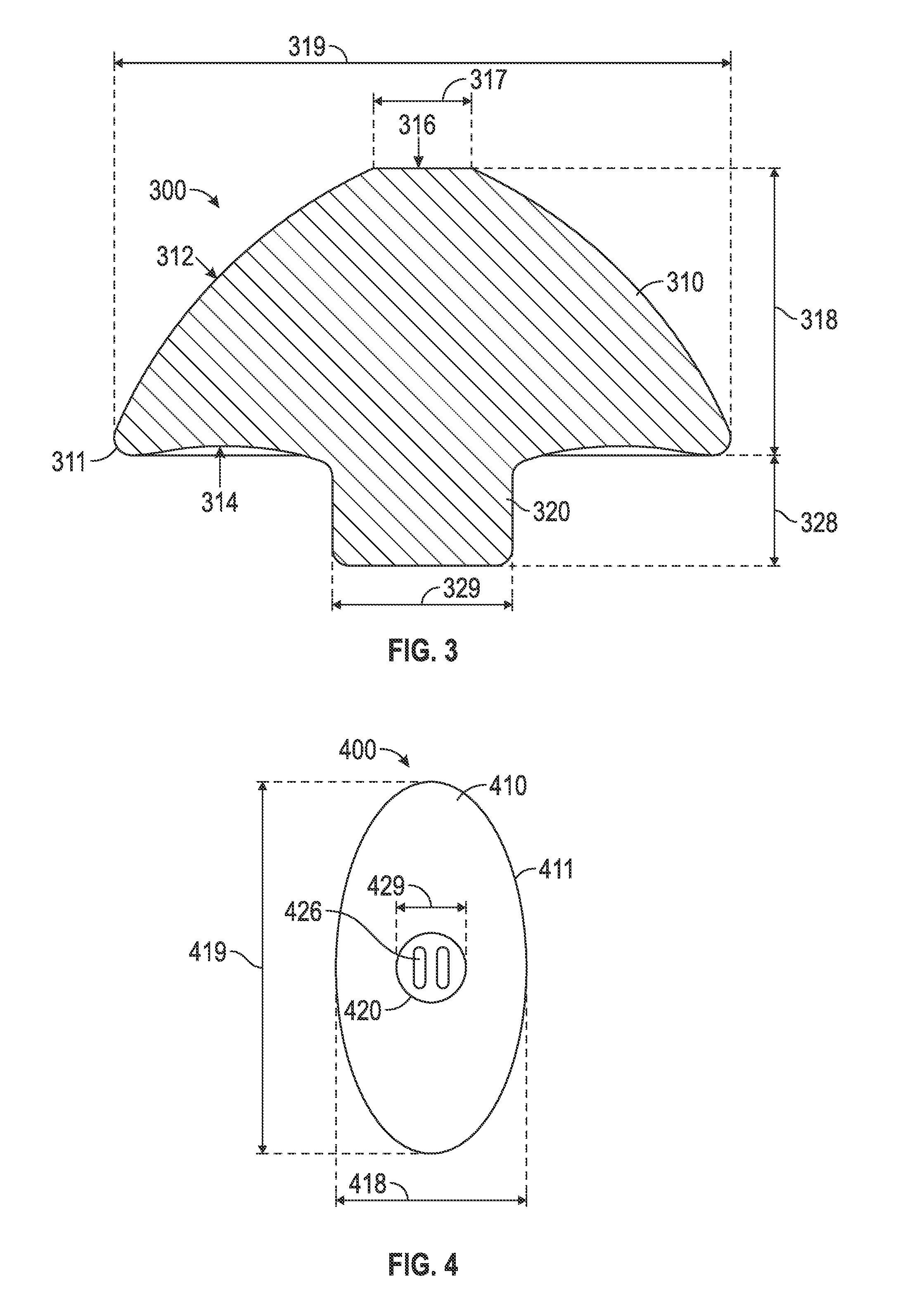Cranial base implant device
a technology of implant device and cranial base, which is applied in the field of implant device, can solve the problems of difficult placement through the craniotomy, leakage of spinal fluid into the surgical field, and difficulty in working bon
- Summary
- Abstract
- Description
- Claims
- Application Information
AI Technical Summary
Benefits of technology
Problems solved by technology
Method used
Image
Examples
Embodiment Construction
[0019]The device disclosed herein includes a mushroom or conical shaped compressible or deformable biocompatible material soft enough to be atraumatic to bone and surrounding neurovascular structures, yet rigid enough to hold form and provide support after insertion into the sella turcica through a hole smaller than an outer diameter of the contact surface or the maximum width of the device.
[0020]FIG. 1 is a side view of an exemplary embodiment of a cranial base implant device (“device”) 100. Device 100 includes a cap 110 and a stem 120. Cap 110 may be rounded and may have a spherical, ellipsoidal or conical shape. The ellipsoidal shapes may include oblate and prolate spheroids. In the embodiment shown in FIG. 1, cap 110 is the shape of a spherical cap, a region of a sphere above a given plane; more particularly cap 110 is a spherical cap with a cap height 118 less than the radius of the sphere. In some embodiments, cap 110 is the shape of a hemisphere, a spherical cap with the plan...
PUM
 Login to View More
Login to View More Abstract
Description
Claims
Application Information
 Login to View More
Login to View More - R&D
- Intellectual Property
- Life Sciences
- Materials
- Tech Scout
- Unparalleled Data Quality
- Higher Quality Content
- 60% Fewer Hallucinations
Browse by: Latest US Patents, China's latest patents, Technical Efficacy Thesaurus, Application Domain, Technology Topic, Popular Technical Reports.
© 2025 PatSnap. All rights reserved.Legal|Privacy policy|Modern Slavery Act Transparency Statement|Sitemap|About US| Contact US: help@patsnap.com



